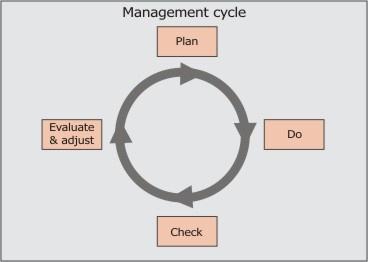Content
Management Plan
Management plan
In the previous sections all the preparatory work for the megasite management plan has been done. To start with a group of stakeholders has been formed, the boundary conditions are known and the conceptual model has been built. There is also a clear picture at Megasite level of the contaminant situation, the geo(hydro)logical conditions, receptors, NA potential and the resulting risks. Based on this information the Megasite Port of Rotterdam has been divided into clusters. For each cluster long-term risk reduction targets have been defined and a cost-efficiency analysis will be performed to determine and select the preferred risk management scenario(s).
Now the goal is to develop and implement a management plan at the Megasite Port of Rotterdam.
The general objective of the MMP is to cost-effectively manage the risks related to soil and groundwater contamination in the Port of Rotterdam according to pre-agreed objectives, thereby ensuring the economic activity in the Rotterdam port and industrial zone on the long term. The MMP should therefore not be viewed in isolation. It has to be integrated in the general economic development and management plans for the Port of Rotterdam. It forms part of the site issuing process and the regional economic and logistic development, including plans for reallocating port and industrial land for urban development purposes. At the same time the MMP has to be in line with the interests and plans of the industrial partners and meet the requirements of the authorities concerned.
This goal may therefore only be achieved in public-private partnership and in agreement with the main stakeholders involved.
The procedure for developing and implementing a management plan for the PoR is structured into five steps, following the management principles of the "plan-do-check-act" Demming circle:
- Organisation of the Megasite Management
- Deciding on management strategy, targets and priorities
- Planning and implementation of management activities
- Monitoring program: Check and review of goals, boundary conditions and effects of measures
- Review process: Evaluation and adjustment of goals and plans
The main deliverable of this step is a megasite management plan to cost-effectively manage the risks related to soil and groundwater contamination in the Port of Rotterdam in a manner acceptable to all main stakeholders.
Monitoring Program
Monitoring program
Check and review of boundary conditions and effects of measures
Regular reviews are necessary to assess the performance and effectiveness of:
- The Soil Quality Megasite Management plan
- The implemented risk reduction measures
Ad 2. The effectiveness of risk reduction and control measures needs to be checked at different levels. This requires performance indicators on a megasite and if considered necessary also at cluster and site level. The extent to which the targets set at each level are reached (e.g. the volume of contaminated groundwater cleaned) forms a main performance indicator. This should be checked on a yearly basis. In order to measure this, monitoring is required.
At megasite level monitoring is done at the planes of compliances (see figure), e.g.:
- At the interface between soil and surface water.
- A horizontal plane at the interface between shallow and deep groundwater.
- A vertical plane at the megasite boundary.
Ad 1: The amount of contamination entering the surface water as a result of migration of contamination towards the surface water.
Ad 2: The (additional) volume of deep groundwater contaminated as a result of vertical migration of contaminated groundwater (m3 per year) compared to the reference year.
Ad 3: The exceeding of the target value (e.g. T-value) for individual contaminants at the megasite boundary
At cluster level the same planes of compliances could apply as for the megasite level.
At site level the site owners are responsible for monitoring the contaminant situation and effect of measures taken.
Feedback of the monitoring results to the Megasite Management Organisation is not compulsory but may need to be encouraged
in order to get a better picture of the contaminant situation and the effect of measures taken.
The risk boundary conditions (basic assumptions) also have to be monitored and checked regularly.
The frequency varies with the nature of the parameters as some are more dynamic than others, e.g.
- contaminant situation (each year as a minimum)
- changes in use and function of soil (every 1-2 years)
- geo(hydrological) parameters (once every 3 years?)
Actions Soil Quality Manager/ Risk management expert/ Cluster Managers:
- Monitor the performance indicators at the different levels according to the monitoring plan
Actions Soil Quality Manager/ Data manager/ Cluster Managers:
- Up-date the database as new monitoring data become available
Actions Soil Quality Manager/ Risk management expert:
- Monitor and check the risk boundary conditions regularly
Actions Soil Quality Manager:
- Report the monitoring results/ performance indicators to the Steering Committee on a yearly basis.
Review Process
Review process
Evaluation and adjustment of goals and plans
Each year checks should be performed to see if the objectives and targets are being met and
the activities are performed according to plan. Also, the monitoring results and performance
indicators need to be evaluated in order to determine if the Megasite Management plan is still on
the right track or its course needs to be adjusted. In the latter case the goals and plans may have to be adjusted,
thereby 'closing' the management loop (see figure).
In addition an audit, performed by an independent external party, may form a suitable instrument to
evaluate the effectiveness of the MMP. It should address the technical, administrative, organizational and legal aspects.
Action Soil Quality Manager:
- Evaluate the findings of the monitoring rounds
- Adjust the goals and plans if considered necessary
- Have an external audit performed every few years to evaluate the effectiveness of the MMP

